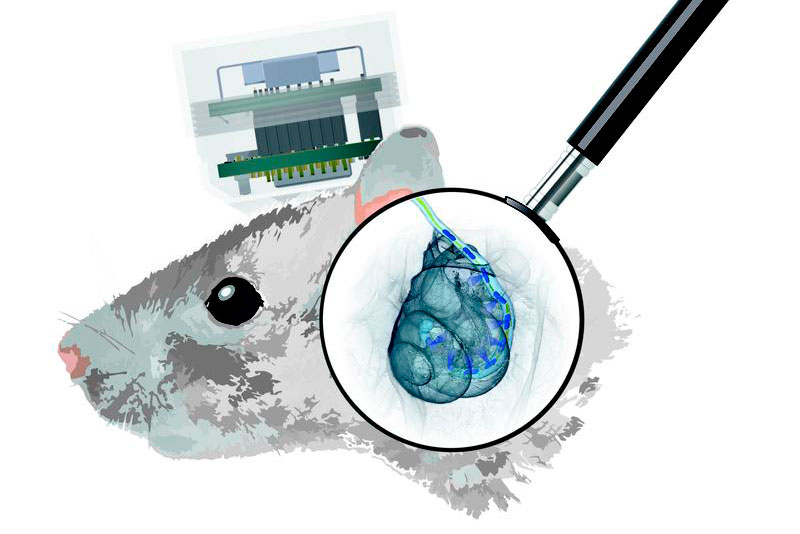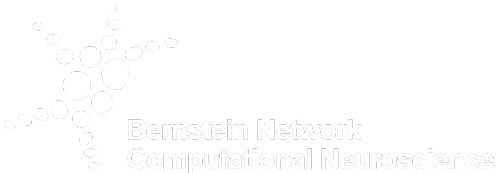On the way to the optical cochlear implant
Interdisciplinary team of scientists from the University Medical Center Göttingen and the University of Freiburg generate for the first time light-controlled behaviour in deaf rodents using optical cochlear implants based on light-emitting diodes. Published in Science Translational Medicine. Translational Medicine.

Optical cochlear implant in the cochlea of a rat. © Dr. Daniel Keppeler, Institute for Auditory Neurosciences, UMG.
/MBExC/UMG/ The cochlear implant (CI) enables worldwide over 700,000 people with profoundly reduced hearing and deaf people to hear again. So far, the auditory nerve has been stimulated by electrical impulses. The quality of this artificial hearing differs greatly from natural hearing. Due to the extensive current propagation in the cochlea, large groups of nerve cells are activated instead of just a few nerve cells – comparable to playing a piano with boxing gloves instead of individual fingers. Patients with CIs are able to communicate in 1-on-1 conversations, but are often dependent on lip-reading in environments with background noise and multiple speakers. Further, music appreciation is limited. A fundamental improvement is promised by the targeted stimulation of the auditory nerve with light.
After 12 years of research on fundamental questions of hearing with light, the hearing research on the Göttingen Campus by Prof. Dr. Tobias Moser, Director of the Institute for Auditory Neuroscience at the University Medical Center Göttingen (UMG), is on the way to develop an optical cochlear implant towards clinical applicability. In cooperation with a team of engineers from the Department of Microsystems Enigineering (IMTEK) at the University of Freiburg, led by Dr. Patrick Ruther, an optical cochlear implant system with integrated micro light-emitting diodes (μLEDs) was developed, which is suitable for long-term studies.
This system optically stimulates the auditory nerve in the animal model of human hearing loss, which has been previously made light-sensitive by genetic manipulation. The system is much smaller and lighter than the clinically used CI, and can therefore also be used in rodents. The scientists have now gone an important step forward: in behavioral experiments they could show that the multichannel optical CI enables deaf rodents to hear again – and this over a period of weeks. The research findings were published on July 22, 2020 in the renowned journal “Science Translational Medicine”.
Original publication
Daniel Keppeler*, Michael Schwaerzle*, Tamas Harczos*, Lukasz Jablonski, Alexander Dieter, Bettina Wolf, Suleman Ayub, Christian Vogl, Christian Wrobel, Gerhard Hoch, Khaled Abdellatif, Marcus Jeschke, Vladan Rankovic, Oliver Paul, Patrick Ruther, Tobias Moser. Multichannel optogenetic stimulation of the auditory pathway using microfabricated LED cochlear implants in rodents. Science Translational Medicine, doi: 10.1126/scitranslmed.abb8086; * equal contribution




